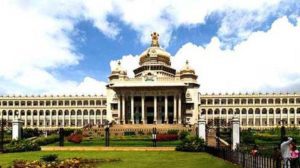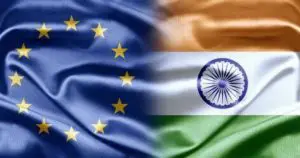Prime Minister’s Powers, Functions and Roles | UPSC – IAS
Prime Minister is the senior-most member of cabinet in the executive of government in a parliamentary system. He is the real executive authority. In other words, president is the head of the State while Prime Minister is the head of the government. The prime minister selects and can dismiss members of the cabinet; allocates posts to members within the government; and is the presiding member and chairperson of the cabinet.
How does a prime minister is elected/appointed/selected in india?
- The Constitution does not contain any specific procedure for the selection and appointment of the Prime Minister.
- According to Article 75 – Only that the Prime Minister shall be appointed by the president. However, this does not imply that the president is free to appoint anyone as the Prime Minister. In accordance with the conventions of the parliamentary system of government, the President has to appoint the leader of the majority party in the Lok Sabha as the Prime Minister
Eligibility – According to Article 84 of The Constitution of India qualification for membership of Parliament. A prime minister must:-
- Be a citizen of India.
- Be a member of the Lok Sabha or the Rajya Sabha. If the person chosen as the prime minister is neither a member of the Lok Sabha nor the Rajya Sabha at the time of selection, they must become a member of either of the houses within six months.
- Be above 25 years of age if they are a member of the Lok Sabha, or, above 30 years of age if they are a member of the Rajya Sabha.
- Not hold any office of profit under the government of India or the government of any state or under any local or other authority subject to the control of any of the said governments.
Roles, Functions and powers of the Prime minister | UPSC – IAS
These are the powers of the prime minister as a chairperson of the cabinet:-
- The prime minister is responsible for aiding and advising the president in distribution of work of the government to various ministries and offices and in terms of the Government of India (Allocation of Business) Rules, 1961.
- PM allocates and reshuffles various portfolios among the ministers.
- He plays a significant role in shaping the foreign policy of the country.
- He is the chief spokesman of the Union government.
- He is the crisis manager-in-chief at the political level during emergencies
- PM can recommend dissolution of the Lok Sabha to President at any time.
- PM can ask a minister to resign or advise the President to dismiss him in case of difference of
opinion. - PM presides over the meeting of council of ministers and influences its decisions.
- PM guides, directs, controls, and coordinates the activities of all the ministers.
- PM can bring about the collapse of the council of ministers by resigning from office.
- The resignation or death of an incumbent Prime Minister automatically dissolves the council of ministers and thereby generates a vacuum.
- The prime minister—on the non-binding advice of the Cabinet Secretary of India led-Senior Selection Board (decides the postings of top civil servants, such as, secretaries, additional secretaries and joint secretaries in the government of India.
- Further, in the same capacity, the PM decides the assignments of top military personnel such as the Chief of the Army Staff, Chief of the Air Staff, Chief of the Naval Staff and commanders of operational and training commands
- Also decides the posting of Indian Police Service officers – the All India Service for policing. PM also exercises control over the Indian Administrative Service (IAS) the country’s premier civil service.
The prime minister is usually always in charge/head of:
- Ministry of Personnel, Public Grievances and Pensions (as Minister of Personnel, Public Grievances and Pensions)
- Cabinet Secretariat
- Appointments Committee of the Cabinet
- Cabinet Committee on Security
- Cabinet Committee on Economic Affairs
- NITI Aayog
- Department of Atomic Energy
- Department of Space
- Nuclear Command Authority
Frequently asked Questions FAQ
what is the position of the prime minister under the parliamentary system of government?
- The Constitution envisions a scheme of affairs in which the president of India is the head of state; in terms of Article 53 with office of the prime minister being the head of Council of Ministers (real executive authority) to assist and advise the president in the discharge of his/her constitutional functions.
Minimum educational qualification for prime minister of india?
- There is no minimum Educational Qualification is prescribe under the Indian Constitution of 1949.




